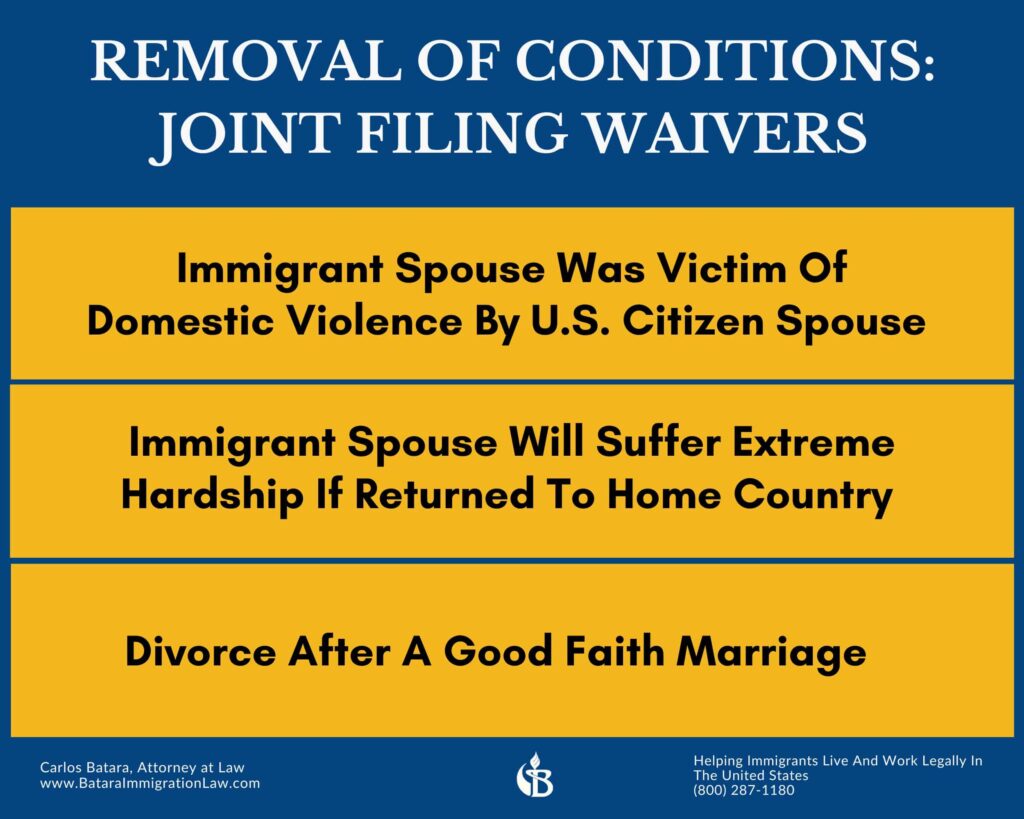
Immigrant Spouses And K-1 Fiancées: The Danger Of Abandonment And Separation
Question:
“My husband helped bring me to the United States through a fiancée visa. We got married. I got a green card for two years. They told us to go back for a new interview in two years. But after living together, we found out things about each other we did not like. He filed for a divorce. I moved with my aunt who lives in Fontana. What can I do? Do I have to go back home?”
(Submitted by Margarita Q., Beaumont, CA)
Answer:
You are facing what is known as the green card removal of conditions. In essence, this eliminates the temporary nature of your permanent resident status. The government does this to make sure short-term marriages are not based on fraud.
Most immigrant spouses who have entered the U.S. under a fiancé visa will fall under this provision of law.
The rule is that if your spouse filed papers to immigrate you, but you were married for less than two years at the time of your approval for residency, your green card status is only good for two years. This is known as conditional permanent residence.
During those two years, as you probably know, conditional green card holders have the same rights of a regular permanent resident. You can work, go to school, and even travel outside the country.
Waivers Of Conditional Residence: Overcoming The Joint Filing Requirement
Before your second year of legal residency ends, you must file Form I-751, a petition to remove conditions, along with updated documents showing your marriage is based on a good faith and legitimate relationship.
The goal is to remove the two year restriction and limit and obtain a 10-year green card. Your status becomes permanent once the removal of conditions petition is approved.
The petition is required to be filed jointly with your spouse.
Now, let’s talk about your current situation.
Don’t think just because you’re separated or getting a divorce that immigration officials will assume your marriage is a fraud. Of course, it will be harder to prove your marriage was a valid marriage, but it can be done.
If your husband is still alive, you may want to talk to him about helping you. Many couples cooperate with each other even after they separate or divorce.
The regulations state you and your husband are supposed to file to remove the conditions on green cards as a couple.
What if your spouse won’t sign the joint petition?
There are three exceptions, commonly known as I-751 removal of conditions waivers.
Here are the exceptions and some problems that might pop up, depending on which waivers you’re seeking to excuse the joint filing requirement.

Removal Of Conditions Waiver No. 1:
Were You A Victim Of Domestic Violence?
If you were, I don’t think your husband will help you.
In such circumstances, you will need to seek a joint filing waiver on your own. This type of exception is based on abuse and battery.
Over the past year, the government has become stricter about evidence to prove your marriage broke up due to domestic violence.
If there was physical violence, you should try to obtain medical proof. Maybe there are police records, too. Perhaps you went to court to get a restraining order.
This may not be enough. I’d recommend getting the statements of family members, friends, neighbors who witnessed any of the mistreatment.
To show domestic violence, however, the abuse does not have to be physical. Mental and psychological mistreatment also counts.
Let’s move to the next removal of conditions waiver.
Removal Of Conditions Waiver No. 2:
Will You Suffer An Extreme Hardship If You Have To Go Back To Your Home Country?
This is very hard to prove.
Demonstrating hardship is complicated in any type of immigration case. Since you arrived on a fiancée visa about two years ago, a short period of time, it will be more difficult to win a joint filing waiver and your case based on a hardship claim than in a long-term marriage.
I am not saying it is impossible.
For instance, did you and your husband have any children together?
What was your home environment like before you came to the U.S. and what have you done to help your relatives living abroad? How will losing this ability affect your mental and physical health?
These concerns are only a starting point.
They barely scratch the surface of what hardship includes. Generally speaking, hardship is not an issue immigrants should try to prove without the help of a professional trained to address such issues.
Because winning a removal of conditions waiver on is a make or break situation for you, the importance of competent assistance to win on the basis of hardship should not be taken lightly.
Removal Of Conditions Waiver No. 3:
Are You Divorced?
You are allowed to file alone if you are divorced. Your divorce must be finished by the time you apply to remove the green card conditions.
On the surface, this is the easiest of the removal of conditions joint filing waivers to obtain.
Yet, be careful if this is the grounds upon which to file your petition.
Being separated or in the middle of a divorce is not sufficient.
In California it usually takes at least six months to obtain a final divorce judgment. You need to have the divorce completed before filing your papers to remove the conditions.
Be sure to check your state’s timing dissolution requirements to ensure your divorce is finalized before submission of your application.
If you have completed the process, there are other ways that a divorce can affect your green card case.
As you can note, each of the joint filing waivers allowing you to file alone has potential pitfalls.
If you have any of these problems, I suggest you talk to an permanent residence attorney before trying to handle things on your own.
BATARA IMMIGRATION LAW INSIGHTS
10 Facts You Should Know About I-751 Petitions To Remove Conditions
Conclusion: The Pitfalls And Promise
Of I-751 Joint Filing Waivers
Although the I-751 form suggests that immigrants pick one of the three grounds as the basis of excusing the joint filing, this requirement is not set in stone.
If your application can be plausibly based on more than one removal of conditions waiver, do not shy away from using any of them.
You should not take chances on losing your right to live, work, and go to school to the U.S. You may never get a second opportunity later in life.
You will lose your green card status if your application to remove your residency conditions is denied.
It is far better to have someone trained in green card law guide you, to assist you in putting together your best possible case.
Eventually, you will be scheduled to go to a local USCIS office for an interview. You will asked questions about your joint filing waiver request.
As a result, if it is your long term goal to live in the United States, you do not want to take a chance that the evidence you submit and your answers to the USCIS offer’s questions support your waiver application.
If you have an ongoing case right now, and you have immediate case-specific questions, you may want to visit our Green Cards And Permanent Residence Attorney Services page for more information.
Or you might want to schedule a 1-On-1 Personalized Strategy And Planning Session to discuss the ins and outs of your case in depth.





